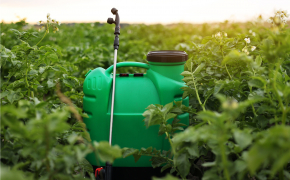EPA Releases Updated Draft Guidance for Biostimulant Products
Key Takeaways
- What Happened: EPA issued revised draft guidance clarifying the types of plant biostimulant products and claims about such products that trigger regulation under FIFRA.
- Who’s Impacted: Companies who produce, distribute, and/or sell plant biostimulant products.
- What Should They Consider Doing in Response: Review the draft guidance document – in particular the tables of claims – and assess how EPA may view their biostimulant products and associated marketing strategies. EPA has also indicated that stakeholders and any other members of the public will have a 30-day opportunity to submit comments on the draft guidance, ending on Thursday December 30, 2020.
In an updated draft guidance document released for public review on November 24, 2020 and published in the Federal Register on November 30, the U.S. Environmental Protection Agency (EPA) has revised key aspects of its earlier effort to identify the types of plant biostimulant products that are subject to regulation under the Federal Insecticide, Fungicide, and Rodenticide Act (FIFRA). The updated guidance builds upon and responds to public comments EPA received on the Agency’s initial draft guidance, issued in March 2019. Consistent with its earlier approach, EPA again declined to propose its own definition of a “plant biostimulant,” which is not a defined term under FIFRA or any other federal statute. Still, the updated draft guidance does provide some additional clarity as to EPA’s position on the applicability of existing FIFRA requirements to this officially undefined – but continually evolving and growing – category of popular agricultural products.
Are plant biostimulants regulated under FIFRA?
Plant biostimulant products generally refer to biochemical, microbial, or chemical substances that are intended to increase crop yields by physiologically “stimulating” the plant. In contrast to fertilizers, which provide nutrients to plants, plant biostimulants alter the way plants respond to nutrients. Critically, there has been longstanding uncertainty as to when plant biostimulants may be subject to regulation as pesticides under FIFRA.
FIFRA defines the term “pesticide” to include not only those substances that are intended to “prevent, destroy, repel, or mitigate” pests, but also a wide range of other products such as defoliants, desiccants, nitrogen stabilizers, and plant growth regulators (PGRs). See FIFRA sec. 2(u). In turn, a PGR is defined to mean “any substance or mixture of substances intended, through physiological action, for accelerating or retarding the rate of growth or rate of maturation, or for otherwise altering the behavior of plants,” while excluding plant nutrients, trace elements, nutritional chemicals, plant inoculants, and soil amendments, or fertilizers. See FIFRA sec. 2(v); 40 C.F.R. 152.6. There is no FIFRA exclusion for plant biostimulants as a general category of products; instead, when considering whether a particular plant biostimulant product may be subject to regulation under FIFRA as a PGR, EPA looks to both the claims made about the product as well as the product’s composition. This determination has significant implications, because if a product is classified as a PGR, it becomes subject to full regulatory oversight as a pesticide under FIFRA, and will require EPA pre-market approval (i.e., registration) before it may be distributed or sold in the United States.
In its newly revised draft guidance, EPA has attempted to further clarify these threshold definitional issues, even without presenting an official definition for plant biostimulants as a category of products. As with its initial draft, EPA provides lists of potential plant biostimulant claims that it has determined will not subject these products to FIFRA regulation, as well as those plant biostimulant product claims that will result in a product being considered “pesticidal”.
According to EPA, examples of “non-pesticidal” claims that do not trigger regulation as a PGR include:
- Avoids/corrects/prevents nutrition-based/nutrient deficiency-based plant disorders (e.g., including, but not limited to: blossom end rot, chlorosis, necrosis, discoloration, stunting, etc.)
- Improves soil/seed nutrient conditions for root growth
- Improve/increase/support biodegradation of organic matter
- Increases/improves/optimizes soil conditions for increased plant vigor
- Increases/improves/optimizes conditions for tolerance of/resistance to abiotic stress
- Improves overall plant nutrition
- Supports nutrient uptake
By contrast, examples of claims that demonstrate “pesticidal intent” and thus may trigger regulation as a PGR include:
- Enhances/promotes/stimulates fruit growth and development
- Inhibits/promotes sprouting
- Induce/promote/retard/suppress seed germination
- Enhances/promotes crop/fruit/produce color/development/quality/shape
In all cases, close evaluation of a specific product’s claims and composition will be required to determine its appropriate regulatory status.
Notable Changes from EPA’s 2019 Guidance
EPA made several significant changes to its initial draft guidance, including by:
- Clarifying that certain claims for increased or decreased plant growth, yield, or germination can be made without triggering pesticide regulation if they are consequent to the intended use as an exception to the definition of a PGR (for example, as a plant nutrient, inoculant, etc.). However, if the same claims are made without qualification or specific reference to such an exception, they will be considered plant regulator claims and may subject the product to regulation as a pesticide.
- Narrowing and modifying the lists of substances that “have no other use than as plant regulators or pesticides” and substances which “have multiple plant regulator and non-plant regulator modes of action.” Commenters had recommended EPA remove these lists from the draft guidance altogether. While EPA retained this section in the guidance, the Agency significantly modified the lists of substances, while further clarifying which modes of action are indicative of plant growth regulation when a substance has multiple modes of action.
Beveridge & Diamond’s Pesticides practice has worked for forty years with U.S. and international clients who research, develop, obtain government approvals for, manufacture, promote, and use pesticidal products and devices. We represent large and small companies with an emphasis on entities that invest in research to discover, develop, and defend new technology. Our Pesticides practice helps clients identify business objectives and implement the most effective regulatory, commercial, litigation, and legislative strategies to achieve or exceed those objectives. If you have any questions, please contact the authors.










